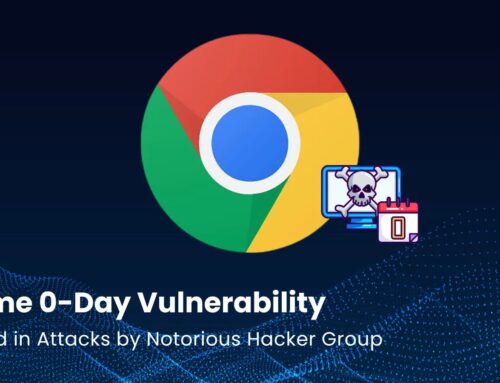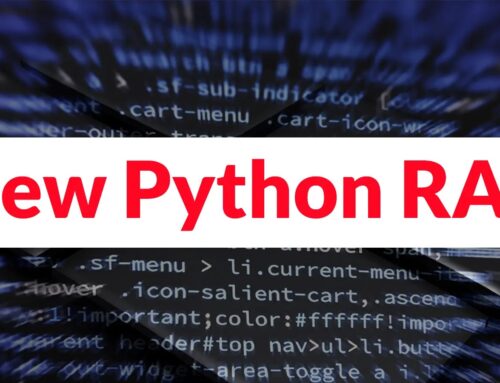
Weaponized ScreenConnect RMM Tool Tricks Users into Downloading Xworm RAT
The Deceptive Weaponization of ScreenConnect: Unmasking the Xworm RAT Campaign
In the relentless landscape of cyber threats, adversaries continually refine their tactics, leveraging legitimate tools for malicious ends. A recent, sophisticated campaign uncovered during an Advanced Continual Threat Hunt (ACTH) by Trustwave’s SpiderLabs team exemplifies this insidious trend: the weaponization of the ScreenConnect Remote Monitoring and Management (RMM) tool to deploy the potent Xworm Remote Access Trojan (RAT).
This incident underscores a critical shift in attacker methodology, moving beyond traditional malware delivery methods to exploit trusted software and manipulate user perception. Understanding the intricacies of this attack chain is paramount for cybersecurity professionals, IT teams, and anyone responsible for digital defense.
Anatomy of the Attack: ScreenConnect as a Trojan Horse
The campaign’s success hinges on a multi-stage infection chain designed to deceive users and bypass Endpoint Detection and Response (EDR) mechanisms. The primary vector involves tricking users into downloading malicious executables disguised as legitimate software. Key elements of this sophisticated attack include:
- Deceptive Lure: Attackers employed fake AI-themed content, capitalizing on the current widespread interest in artificial intelligence. This served as a compelling social engineering hook to entice unsuspecting users.
- Manipulated Digital Signatures: A critical aspect of the evasion strategy involved tampering with digital signatures. By manipulating these trust indicators, threat actors aimed to circumvent security checks that rely on signature validation.
- ScreenConnect Abuse: Once the initial malicious payload was executed, the attackers leveraged the legitimate ScreenConnect RMM tool. ScreenConnect, designed for remote IT support and management, became a conduit for establishing persistent access and further malicious activities. This abuse transformed a trusted utility into a tool for covert operations, making its activity difficult to distinguish from legitimate use.
- Xworm RAT Deployment: The ultimate objective was to install the Xworm RAT. Xworm is a powerful Remote Access Trojan capable of extensive control over compromised systems, including data exfiltration, remote command execution, and surveillance.
The Role of Xworm RAT and its Capabilities
The Xworm RAT is a versatile and dangerous piece of malware, offering attackers pervasive control over infected machines. Its capabilities typically include, but are not limited to:
- Remote Desktop Control: Gaining full access to the victim’s desktop, allowing direct manipulation of files and applications.
- Keylogging: Capturing keystrokes to steal credentials, personal information, and sensitive data.
- File Management: Uploading, downloading, deleting, and executing files on the compromised system.
- Webcam and Microphone Access: Spying on victims through their devices’ cameras and microphones.
- Password Theft: Extracting saved passwords from web browsers and other applications.
- Process Manipulation: Starting, stopping, and injecting code into processes.
- Lateral Movement: Further compromising network resources from the infected endpoint.
Bypassing Endpoint Detection and Response (EDR)
A significant challenge posed by this campaign is its ability to bypass EDR solutions. This evasion is achieved through several methods:
- Living Off The Land (LotL) Techniques: By abusing a legitimate tool like ScreenConnect, attackers blend their malicious activities with normal system operations, making them harder to detect by behavioral analysis that might flag unusual processes.
- Digital Signature Manipulation: Forging or tampering with digital signatures can trick EDR systems into believing the malicious executables are legitimate, allowing them to run unimpeded.
- Obfuscation and Anti-Analysis: The multi-stage infection chain often involves layers of obfuscation to hinder static and dynamic analysis by security tools.
Remediation Actions and Proactive Defense
Defending against sophisticated attacks like the weaponization of ScreenConnect requires a multi-layered and proactive security strategy. Here are actionable steps organizations can take:
- Robust Application Whitelisting/Blacklisting: Implement strict controls over what applications can run on endpoints. Only allow approved applications, or block known malicious ones.
- Endpoint Detection and Response (EDR) Enhancement: Review and fine-tune EDR rules to detect anomalous behavior related to RMM tools, even if the tools themselves are legitimate. Focus on process relationships, network connections, and file system modifications.
- Strict Digital Signature Validation: Ensure all systems are configured to rigorously validate digital signatures. Investigate any alerts related to invalid or manipulated signatures.
- User Awareness Training: Conduct regular, dynamic security awareness training for all employees. Emphasize the dangers of social engineering, especially lures involving trending topics like AI, and the importance of verifying software sources.
- Least Privilege Principle: Enforce the principle of least privilege for all users and applications. Restrict user permissions to only what is necessary for their roles.
- Network Segmentation: Implement network segmentation to limit the lateral movement of threats should an endpoint be compromised.
- Patch Management: Keep all software, including RMM tools like ScreenConnect, updated to the latest versions to mitigate known vulnerabilities.
- Regular Threat Hunting: Proactively search for signs of compromise within your environment, going beyond automated alerts. This includes monitoring for unusual RMM tool usage or suspicious network traffic.
- Incident Response Plan: Develop and regularly test a comprehensive incident response plan to ensure a swift and effective reaction to any detected breach.
Tools for Detection and Mitigation
Leveraging the right tools is crucial for both preventing and responding to such sophisticated attacks. Here’s a selection of relevant tools:
| Tool Name | Purpose | Link |
|---|---|---|
| Endpoint Detection and Response (EDR) Solutions | Advanced threat detection, incident investigation, and response at the endpoint level. | N/A (Vendor-specific) |
| Security Information and Event Management (SIEM) | Aggregates and analyzes security logs from various sources for threat detection and compliance. | N/A (Vendor-specific) |
| Application Whitelisting Software | Prevents unauthorized applications from executing on endpoints. | N/A (Vendor-specific) |
| Threat Intelligence Platforms | Provides insights into current threats, attack methodologies, and indicators of compromise (IoCs). | N/A (Vendor-specific) |
| Digital Certificate Management Tools | Manages and validates digital certificates to ensure authenticity. | N/A (Vendor-specific) |
Key Takeaways for a Resilient Security Posture
The weaponization of legitimate tools like ScreenConnect for Xworm RAT deployment highlights a growing trend in cyber warfare. Attackers are increasingly adept at blending into normal operational environments, making traditional signature-based defenses less effective. The success of this campaign stresses the critical importance of a defense-in-depth strategy that includes robust EDR, meticulous digital signature validation, vigilant user education, and proactive threat hunting.
Organizations must shift their focus from merely preventing known threats to building resilience against sophisticated, adaptive adversaries. By understanding the evolving threat landscape and implementing comprehensive security measures, businesses can significantly reduce their attack surface and mitigate the impact of such cunning cyberattacks.





